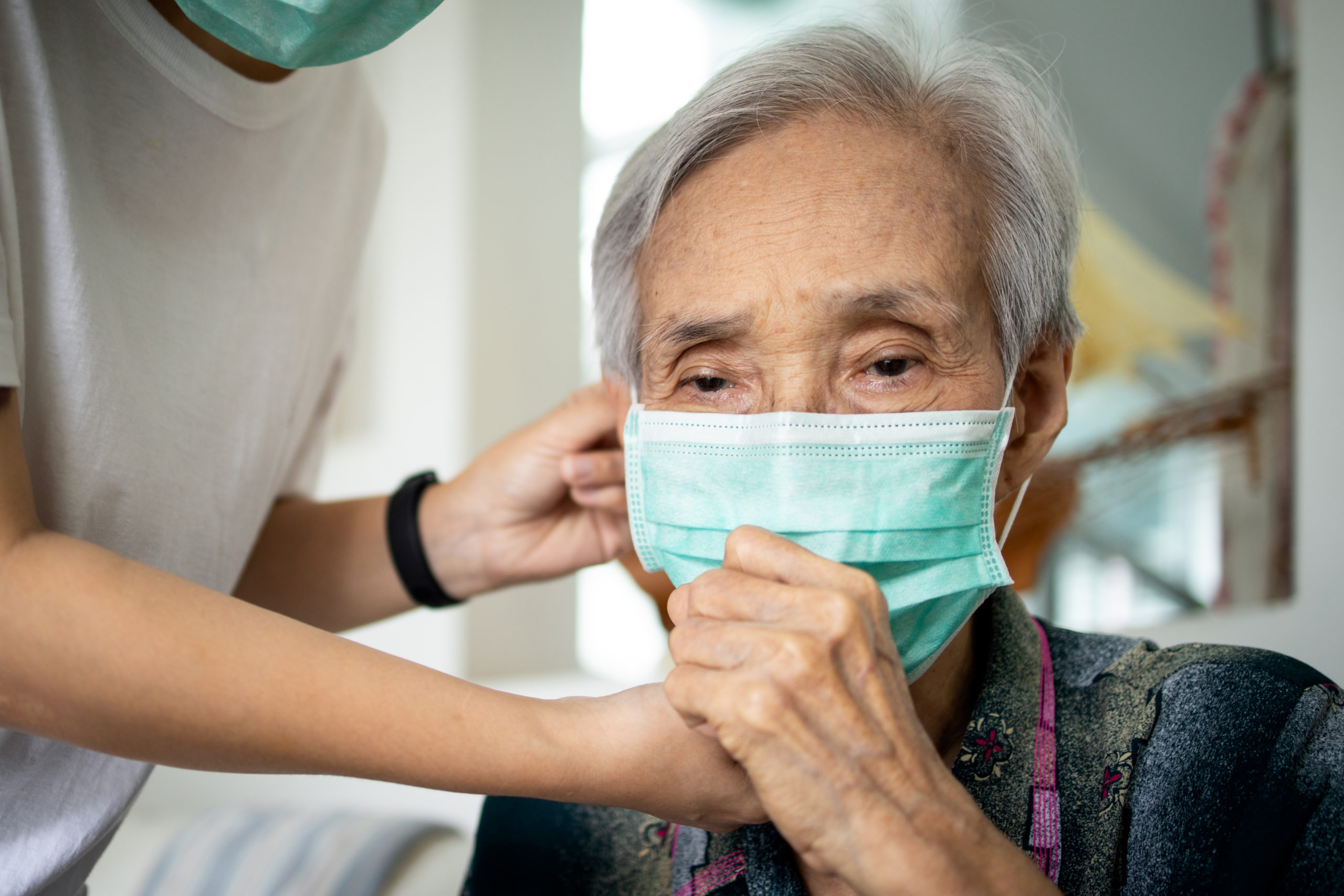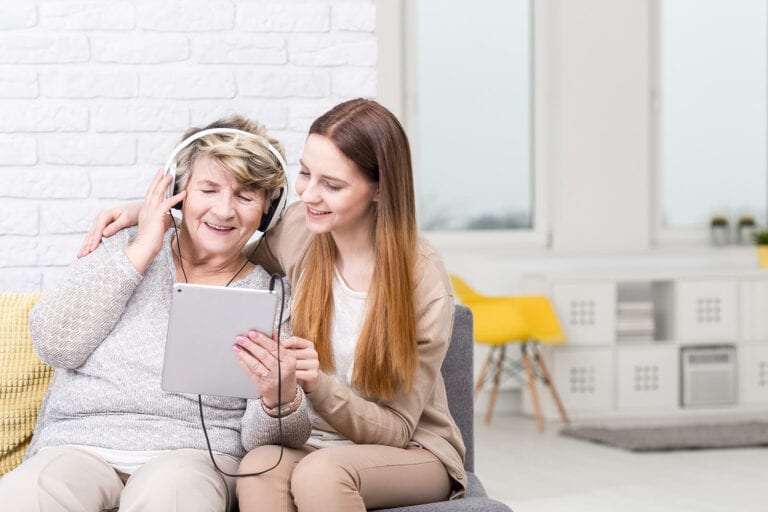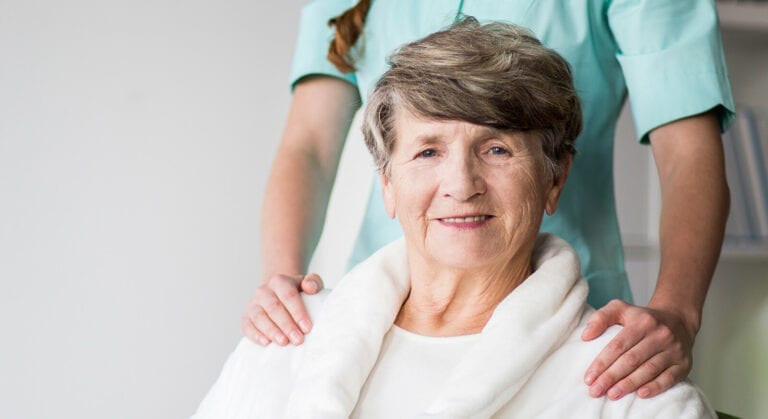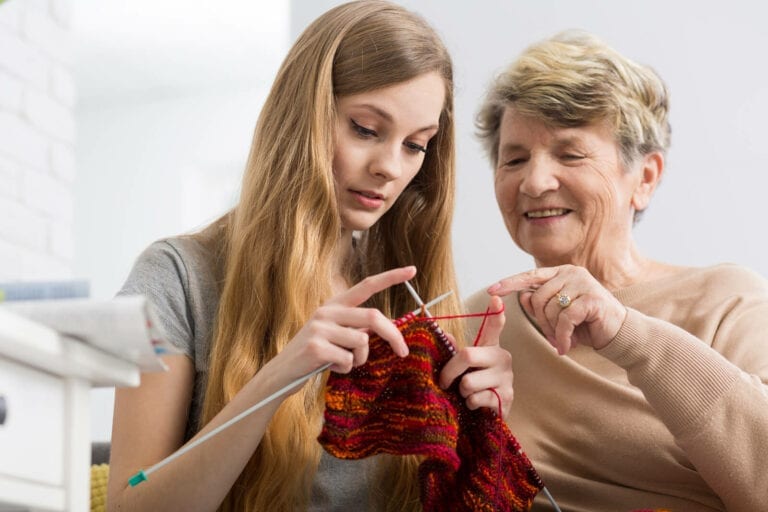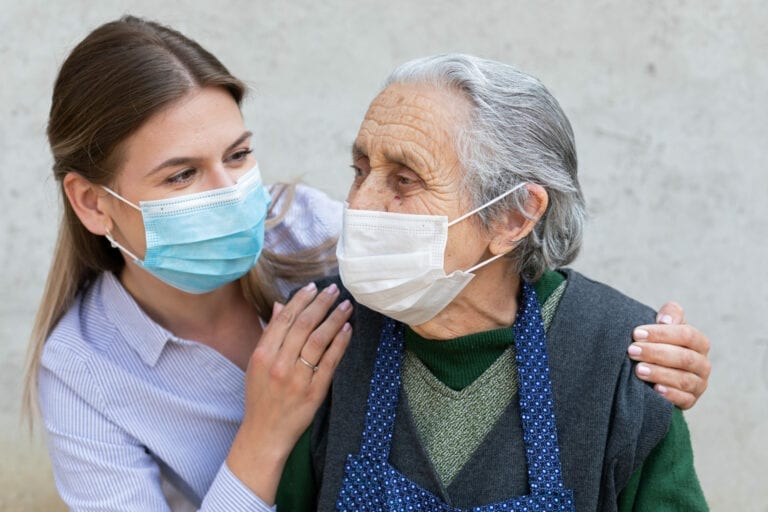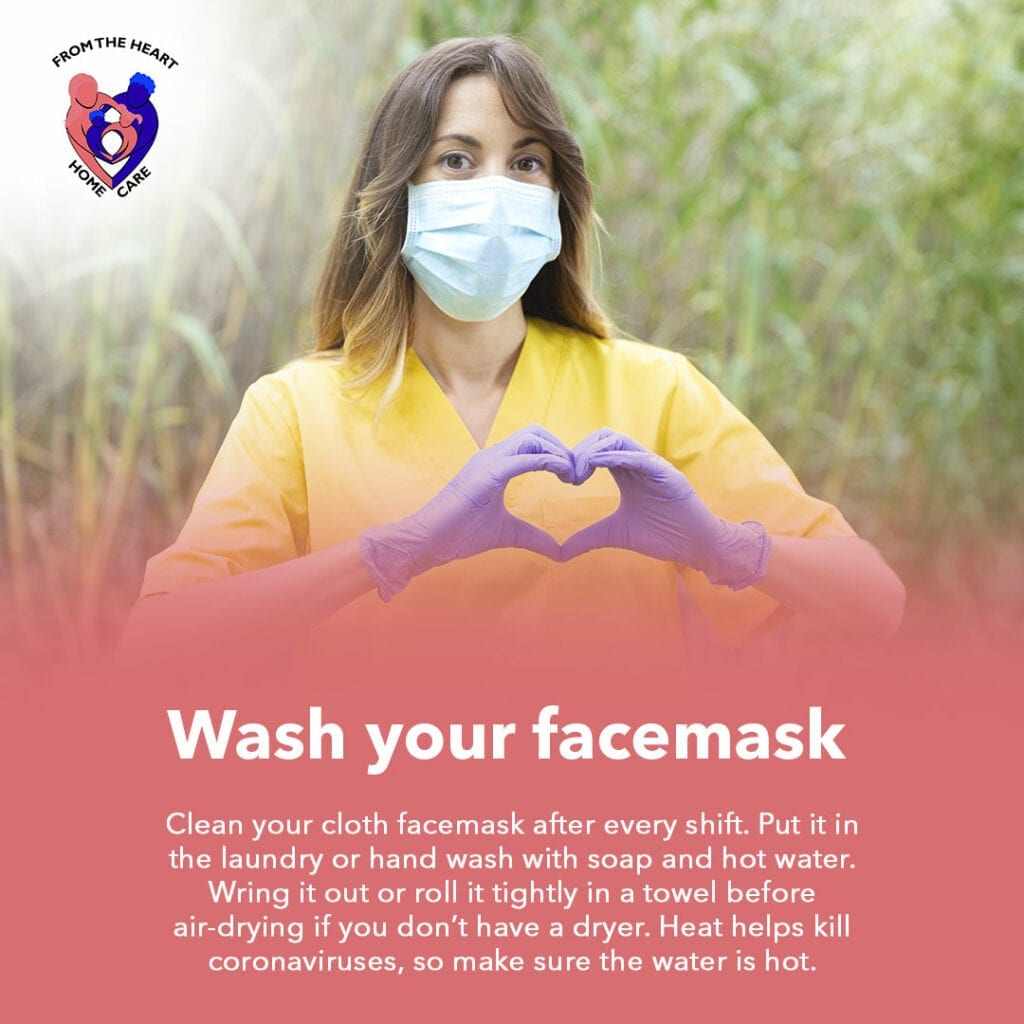
During this pandemic brought on by COVID-19, staying safe should be on the top of everyone’s priority list.
COVID-19 spreads primarily from person to person through respiratory droplets, often referred to as breathing droplets. Respiratory droplets travel into the air when you cough, sneeze, talk, yell or sing. These droplets can then land on or near the mouths or noses of people who are near you or they might breathe these droplets in. Masks are a basic barrier to avoid your respiratory drops from reaching others. Research studies reveal that masks lower the spray of droplets when used over the nose and mouth.
You should use a mask, espeically if you are working as a caregiver providing in-home care assistance or elderly care . This is because several studies have actually found that people with COVID-19 who never develop signs (asymptomatic) and those who are not yet revealing symptoms (pre-symptomatic) can still spread out the infection to other people. Wearing a mask assists independent living seniors around you, in case you are infected but not showing signs. It is especially crucial to wear a mask when you are inside with people you do not live with and when you are not able to stay at least 6 feet apart given that COVID-19 spreads primarily amongst individuals who remain in close contact with one another.
Properly wearing your mask is one of the main safety procedures outside of social distancing to help keep the spread of COVID-19 at a minimum. With that being said, knowing how to properly wear your mask or face covering is something that everyone should have knowledge of.
Make sure it fits and likewise breathable:
It is really important to pick a mask that you can put on for an extended time without getting uneasy. Always, wearing a mask will definitely affect the flow of air to some extent, so make sure you can breathe along with speak effortlessly. Surgical masks have numerous layers to obstruct bead transmission yet are created to remain breathable, as are properly designed cotton masks. They are both exceptional choices. You should avoid products that will certainly aggravate your skin. Masks that are likewise loosened will definitely bother you, given that you will constantly need to adjust them.
Knowing the Different Types of Face Masks
Cloth masks:
The most effective fabrics for fabric masks are firmly woven materials, such as cotton and cotton blends. It should breathable. It should have two or 3 material layers. Less effective materials for fabric masks are loosely woven fabrics, such as loose knit fabrics.
Non-medical disposable masks:
You may prefer using disposable masks in circumstances where your mask is likely to get dirty or damp. As with cloth masks, make sure your non reusable mask fits close to your face without large side-gaps and completely covers your nose and mouth.
Masks with exhalation valves or vents:
CDC does not recommend using masks with exhalation valves or vents because this kind of mask may not prevent you from spreading COVID-19 to others. The hole in the mask may allow your breathing droplets to reach others. Research on the effectiveness of these types of masks is continuous.
Surgical masks and respirators:
Do not utilize surgical masks and respirators that are indicated for health care employees and in-home care services. Currently, surgical masks and respirators are critical materials that should be booked for healthcare employees, adult day care services and other medical very first responders to prevent supply scarcities.
When should a face mask be worn
Consider wearing a face mask when you are sick with a cough or sneezing illness (with or without fever) and when you expect to be around other people. It is very important to know that anytime you are interacting with the general public you pose the risk of spreading germs. The face mask will help protect them from catching your illness. Healthcare settings have specific rules for when people should wear their face masks.
Disposable face mask
Disposable face masks should be used once and then thrown in the trash. You should also remove and replace masks when they become moist.
Always follow product instructions on use and storage of the mask, and procedures for how to put on and remove a mask. If instructions for putting on and removing the mask are not available, then follow the steps below.
How to properly wear a face mask
- Clean your hands with soap and water or hand sanitizer before touching the mask.
- Remove a mask from the box and make sure there are no obvious tears or holes in either side of the mask.
- Determine which side of the mask is the top. The side of the mask that has a stiff bendable edge is the top and is meant to mold to the shape of your nose.
- Determine which side of the mask is the front. The colored side of the mask is usually the front and should face away from you, while the white side touches your face.
- Follow the instructions below for the type of mask you are using.
- Face Mask with Earloops: Hold the mask by the ear loops. Place a loop around each ear.
- Face Mask with Ties: Bring the mask to your nose level and place the ties over the crown of your head and secure with a bow.
- Face Mask with Bands: Hold the mask in your hand with the nosepiece or top of the mask at fingertips. Allowing the headbands to hang freely below hands. Bring the mask to your nose level and pull the top strap over your head so that it rests over the crown of your head. Pull the bottom strap over your head so that it rests at the nape of your neck.
- Mold or pinch the stiff edge to the shape of your nose.
- If using a face mask with ties then take the bottom ties. One in each hand, and secure with a bow at the nape of your neck.
- Pull the bottom of the mask over your mouth and chin.
How to remove a face mask
- Clean your hands with soap and water or hand sanitizer before touching the mask. Avoid touching the front of the mask. The front of the mask is contaminated. Only touch the ear loops/ties/band. Follow the instructions below for the type of mask you are using.
- Face Mask with Earloops: Hold both of the ear loops and gently lift and remove the mask.
- Mask with Ties: Untie the bottom bow first then untie the top bow. And pull the mask away from you as the ties are loosened.
- Bands: Lift the bottom strap over your head first then pull the top strap over your head.
- Throw the mask in the trash. Clean your hands with soap and water or hand sanitizer.
Do not touch your mask after it’s on:
You should ensure that your mask fits properly. By doing this you will not have to change it later– you can pollute your mask if you adjust it when your hands aren’t clean and you can infect your hands. You should stand up to the lure to touch your face or mask if your skin feels itchy.
Laundry Your Fabric Mask Frequently:
You should clean your cloth mask regularly, preferably daily if you are wearing the same one. Masks need to be cleaned and also dried with heat. Boiling them separately for 10 minutes with a safe cleaner can be a valuable choice. Making use of bleach to decontaminate them can also benefit you. Prior to washing them, masks must be kept inside a zip-close plastic bag and not combined together with your other laundry or with your tidy masks. It’s recommended to have at the minimum at least five face masks so you can clean them effectively in between uses. Additionally, make certain not to share masks with different other family members. Medical masks are non reusable and also are to be thrown out after a single use.
If you wear corrective lenses/glasses, you should also take care to prevent your glasses from misting up. A lot of individuals have problems with their glasses fogging up while wearing their mask. The most effective avoidance is to have a tight fit of the mask on the bridge of the nose. By doing this, no air will be able to pass through that path causing fogging that might impede your vision. Check your masks fit in your home before you leave by strongly breathing many times. If your glasses fog, adjust the mask (tighten the fit around the bridge of your nose) and test once again up until no fogging occurs, and likewise your sight remains clear.
Do Not Put a Mask on a Toddler:
Toddlers under the age of two are not to wear face masks, but children older than 2 should wear them the same as an adult. It is vital for adult caretakers to wear masks when taking care of children. In this manner, the child’s mask will more probable to remain on, as well as the child becoming more comfortable with the idea of having to keep on a mask at all times.
If you’re sick, put on a mask at home:
For individuals who are showing signs or symptoms, they should put on a mask even while in their home. If an individual has either a verified COVID-19 infection or has traditional signs of the illness, the affected person needs to self-isolate within the residence as high as feasible, using a different area as well as washroom, if readily available. When connecting with other household members, such as using care and bringing food, masks must be utilized by both the affected along with unaffected home members. Keep in mind, if you have routine signs and symptoms of the condition, you need to self-quarantine in the house, and along with you should not head out in public in any way.
Send Out the Right Message:
Putting on a mask sends a beneficial message in the battle versus COVID-19. In 2020, masks put on by front-line employees have actually become a sign of valor, stamina, and likewise even heroism. Possibly, when they are placed on by everyone, masks will end up being a symbol of reemerging from isolation, of reuniting and recognizing simply how much we are carried out in this together.
Final words:
Masks should be used anytime you remain in public or people are nearby you. Masks act as a physical barrier to safeguard you and others from bacterial and viral particulates. Many people unknowingly infect others by heading out and spreading out germs by coughing or touching others. You can head out in public locations without a mask if there is no one nearby. Otherwise, regardless if it’s close quarters or spaced out, you must use a mask with others around. This is precaution to yourself and those around you.
Wearing a mask benefits two factors: It’s going to lower 95% of the breathing that sends out the virus approximately 6 feet away in space and likewise will minimize fecal/oral transmission by preventing the virus from entering your nose or mouth if you touch a polluted surface and after your face. Just as essential as wearing a mask is proper handling when using them. Remember that homemade cloth face masks must be cleaned and have their filter changed after each usage or if they become damp. Change it if you find that a mask is damaged.

